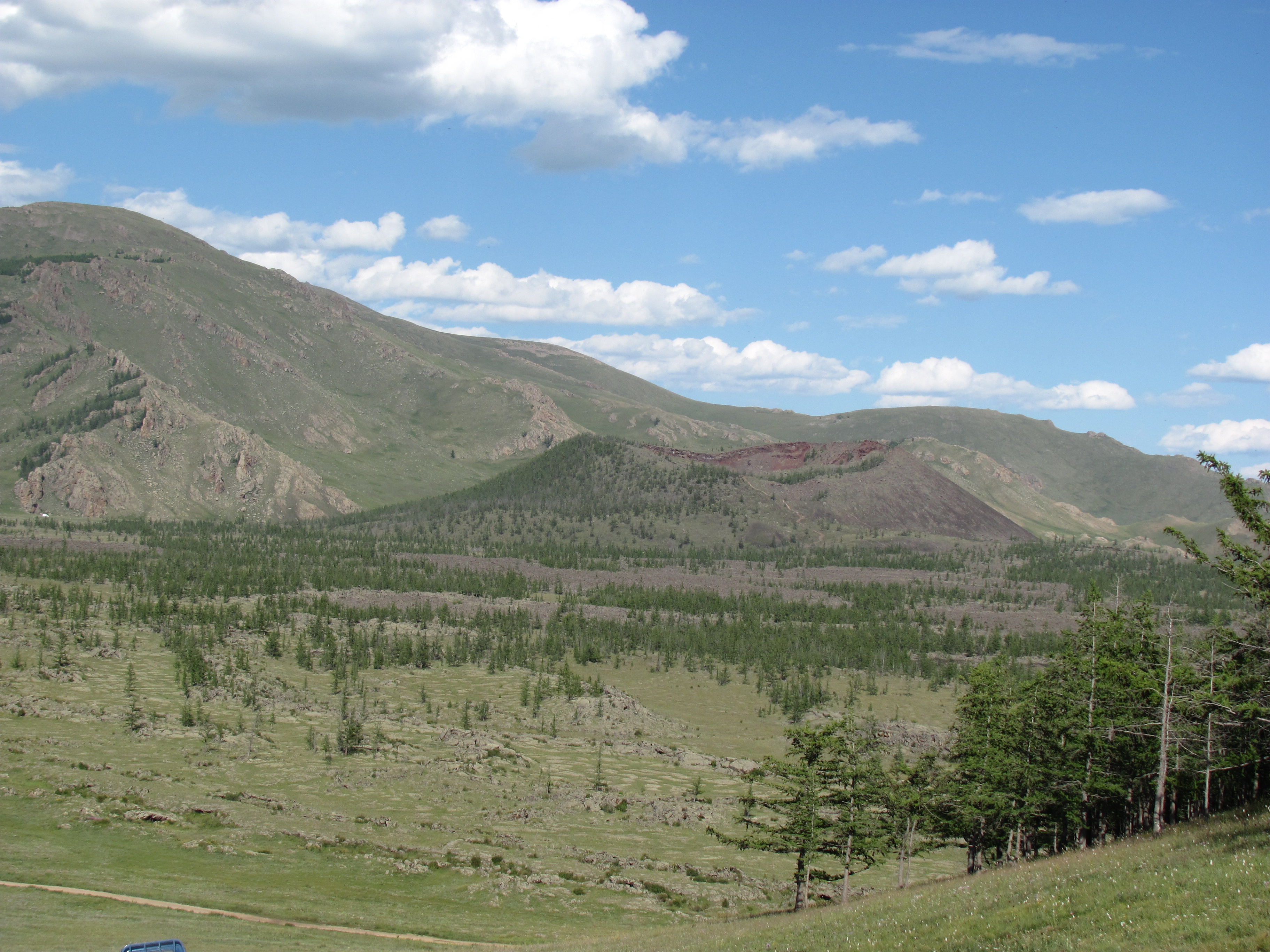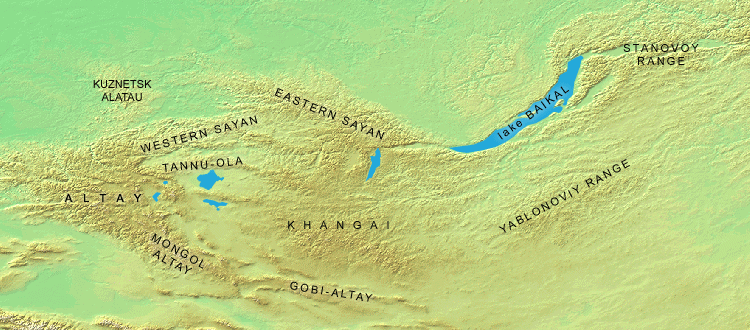Khangai Mountains on:
[Wikipedia]
[Google]
[Amazon]
The Khangai Mountains form a

 The tallest mountain is Otgontenger ( "Youngest sky"), which is about 4,000 metres high. It is revered by the
The tallest mountain is Otgontenger ( "Youngest sky"), which is about 4,000 metres high. It is revered by the Vertical Variability of Climatic Conditions in the Khangai Mountains
(1980). Brzezniak, Eligiusz; Niedzwiedz, Tadeusz. p.34.
range
Range may refer to:
Geography
* Range (geographic), a chain of hills or mountains; a somewhat linear, complex mountainous or hilly area (cordillera, sierra)
** Mountain range, a group of mountains bordered by lowlands
* Range, a term used to i ...
in central Mongolia
Mongolia is a landlocked country in East Asia, bordered by Russia to the north and China to the south and southeast. It covers an area of , with a population of 3.5 million, making it the world's List of countries and dependencies by po ...
, some west of Ulaanbaatar
Ulaanbaatar is the Capital (political), capital and List of cities in Mongolia, most populous city of Mongolia. It has a population of 1.6 million, and it is the coldest capital city in the world by average yearly temperature. The municipa ...
.
Name
Two provinces of Mongolia are named after the Khangai mountains: Arkhangai (North Khangai) and Ovorkhangai (South Khangai). The mild climate area where the two provinces meet (in eastern Khangai) is known as the cradle of Mongolian and nomadic civilization. The plains at the foot of the eastern Khangai host the Orkhon Valley World Heritage Site. TheXiongnu
The Xiongnu (, ) were a tribal confederation of Nomad, nomadic peoples who, according to ancient Chinese historiography, Chinese sources, inhabited the eastern Eurasian Steppe from the 3rd century BC to the late 1st century AD. Modu Chanyu, t ...
capital Luut Khot (Lungcheng), the Xianbei
The Xianbei (; ) were an ancient nomadic people that once resided in the eastern Eurasian steppes in what is today Mongolia, Inner Mongolia, and Northeastern China. The Xianbei were likely not of a single ethnicity, but rather a multiling ...
capital Ordo and the Rouran
The Rouran Khaganate ( Chinese: zh, c=, p=Róurán, label=no), also known as Ruanruan or Juan-juan ( zh, c=, p=Ruǎnruǎn, label=no) (or variously ''Jou-jan'', ''Ruruan'', ''Ju-juan'', ''Ruru'', ''Ruirui'', ''Rouru'', ''Rouruan'' or ''Tantan'') ...
capital Moomt (Mume) are said to have been located there. Later empires also established their capitals there: e.g. the Uyghur Khaganate
The Uyghur Khaganate (also Uyghur Empire or Uighur Khaganate, self defined as Toquz-Oghuz country; , Tang-era names, with modern Hanyu Pinyin: or ) was a Turkic empire that existed for about a century between the mid 8th and 9th centuries. It ...
(745–840) built their capital Ordu-Baliq in the region.
Features

 The tallest mountain is Otgontenger ( "Youngest sky"), which is about 4,000 metres high. It is revered by the
The tallest mountain is Otgontenger ( "Youngest sky"), which is about 4,000 metres high. It is revered by the Mongols
Mongols are an East Asian ethnic group native to Mongolia, China ( Inner Mongolia and other 11 autonomous territories), as well as the republics of Buryatia and Kalmykia in Russia. The Mongols are the principal member of the large family o ...
and state ceremonies are held there. ''Otgontenger'' is considered sacred by ancient Turks.
Suvraga Khairkhan
Suvraga Khairkhan (, ; ) is a mountain of the Khangai Mountains range in the Tsenkher, Arkhangai Province in Mongolia. It has an elevation of and is considered a regional sacred mountain.
The Suvraga Khairkhan is the pivotal point between t ...
, 3,117 metres tall, is another sacred mountain to the east of Tsetserleg Tsetserleg (, ''garden'') may signify:
* Tsetserleg (city), the capital of Arkhangai aimag in Mongolia
* two sums (districts) in different aimags of Mongolia:
** Tsetserleg, Arkhangai
** Tsetserleg, Khövsgöl
{{disambig ...
.
Taryatu-Chulutu
Taryatu-Chulutu or Tariat Chuluut ( – ) is a volcanic field in Mongolia. It is part of a volcanic area in Central Asia in the Hangai range that may be linked to the rifting of the Lake Baikal Rift. The field itself is located within the valle ...
is an extinct volcanic field on the northern slopes of the Khangai Mountains.
The mountains feed the rivers Orkhon, Selenge, Ider, Zavkhan and the lakes Orog and Böön Tsagaan. In the west, the Khangai mountains transition into the Great Lakes Depression
The Great Lakes Depression, also called the Great Lakes Hollow, is a large semi-arid Depression (geology), depression in Mongolia that covers parts of the Uvs Province, Uvs, Khovd Province, Khovd, Bayan-Ölgii Province, Bayan-Ölgii, Zavkhan Prov ...
.
The Khangai mountain region is known for its mild microclimates in certain areas. Winters there are not as harsh as in other parts of the country.(1980). Brzezniak, Eligiusz; Niedzwiedz, Tadeusz. p.34.

Notes
References
{{Authority control Mountain ranges of Mongolia